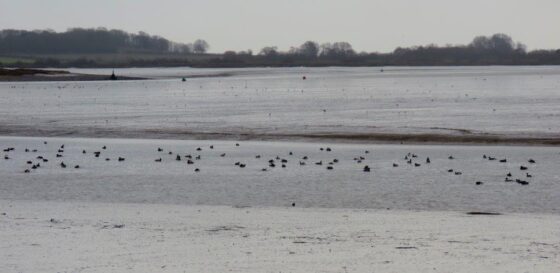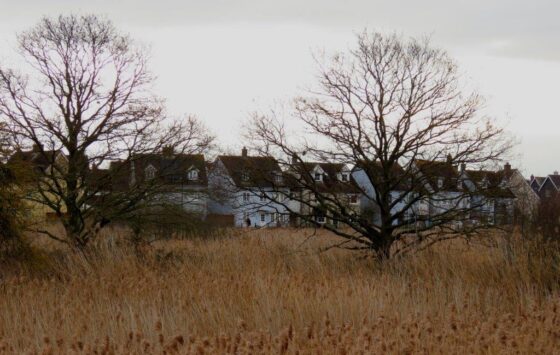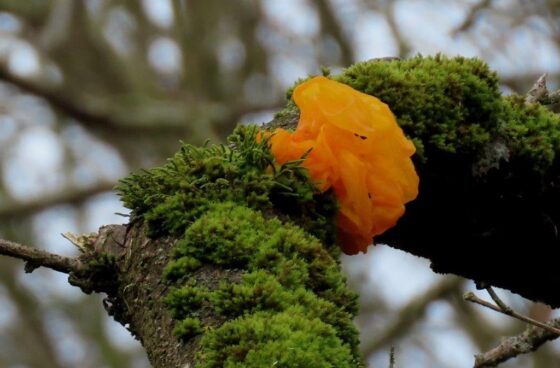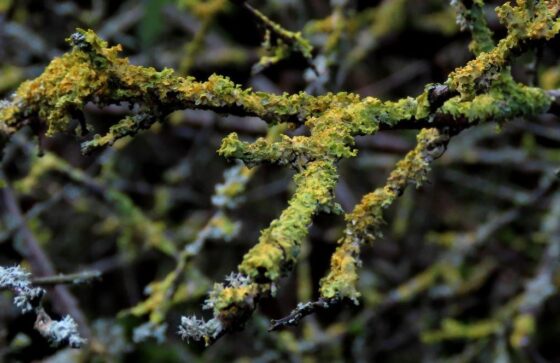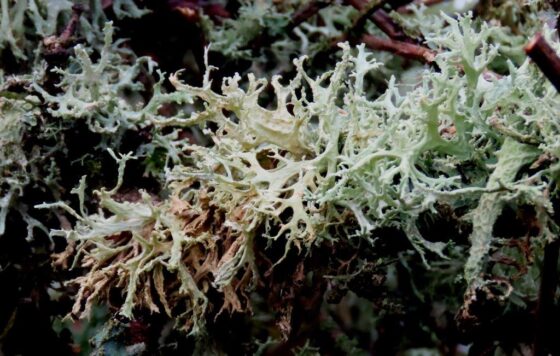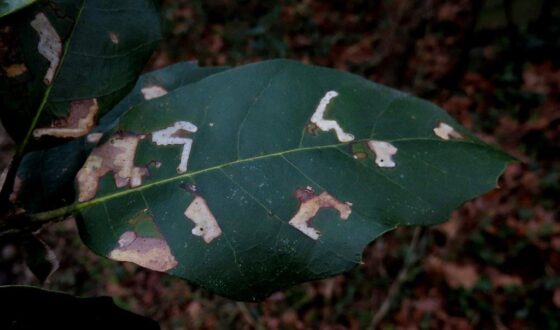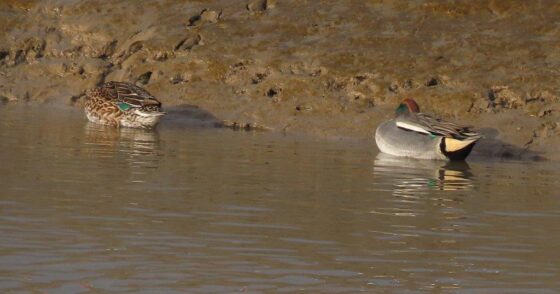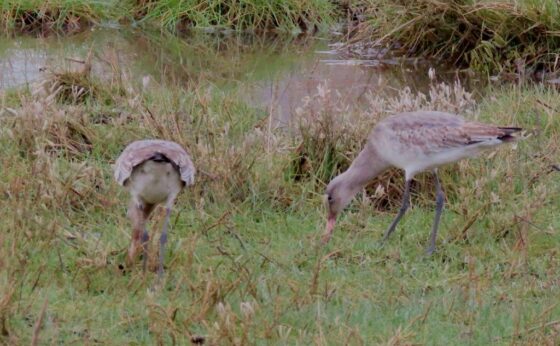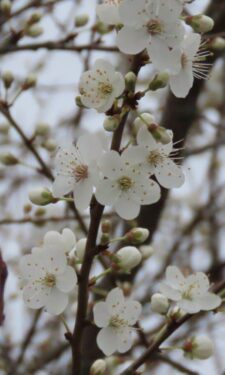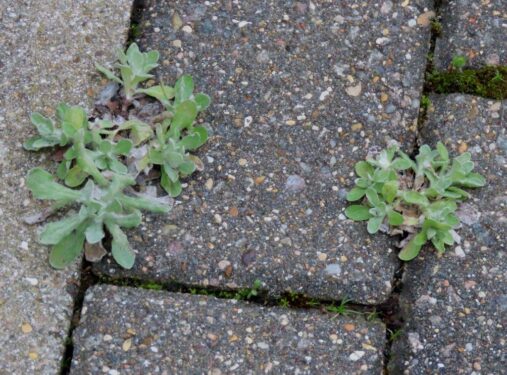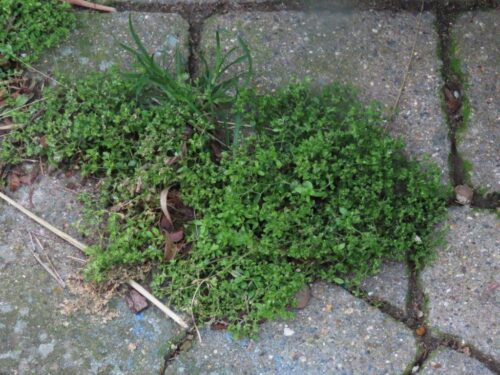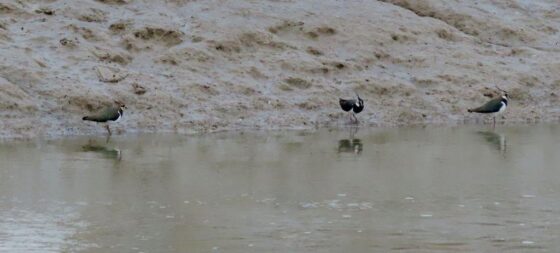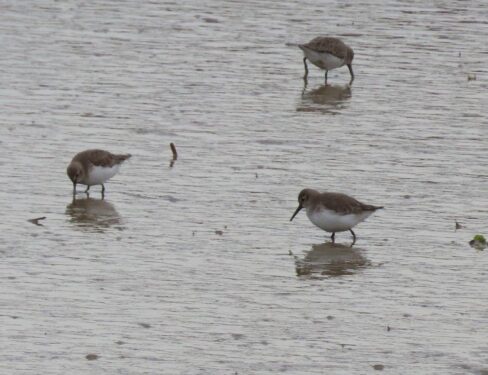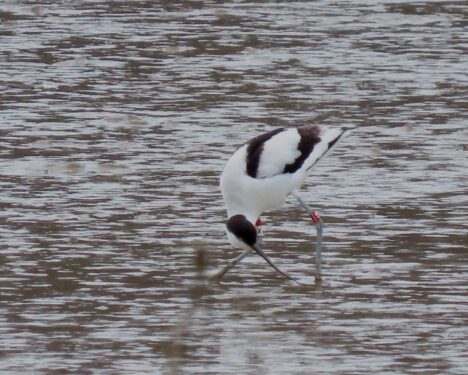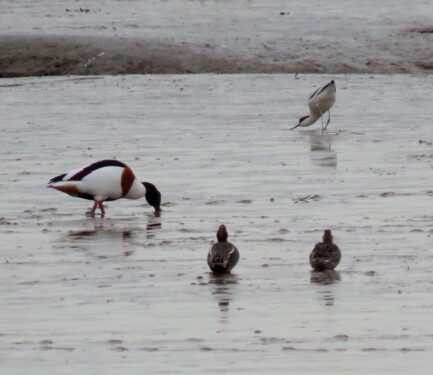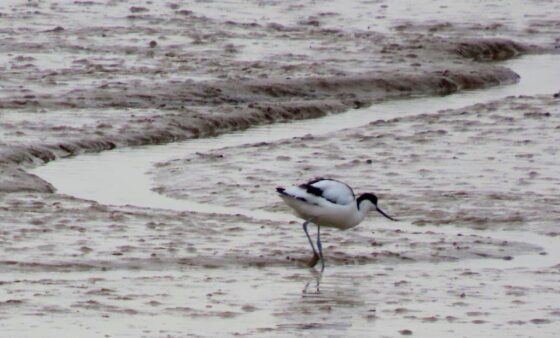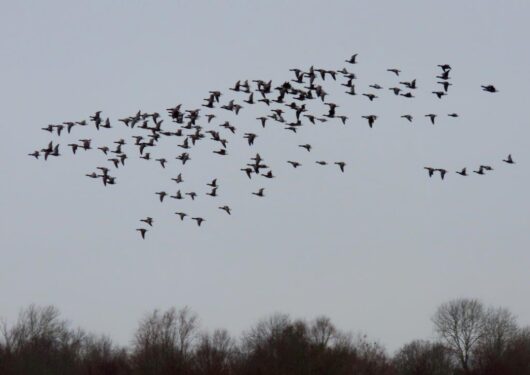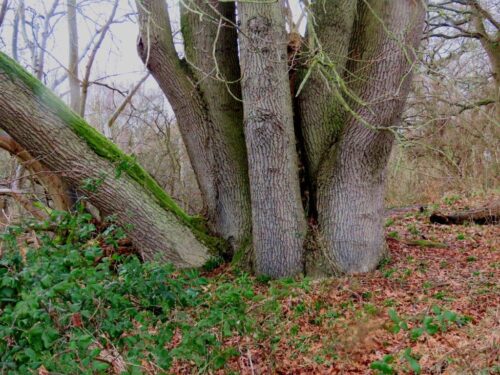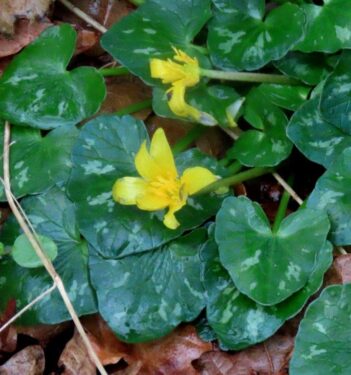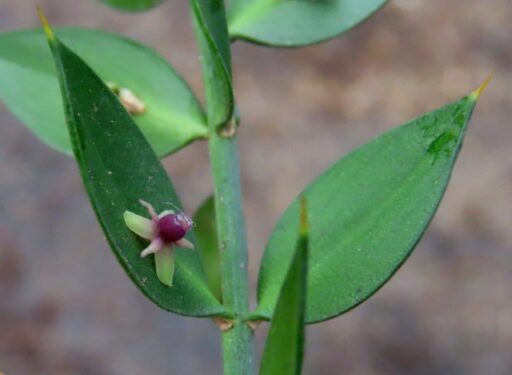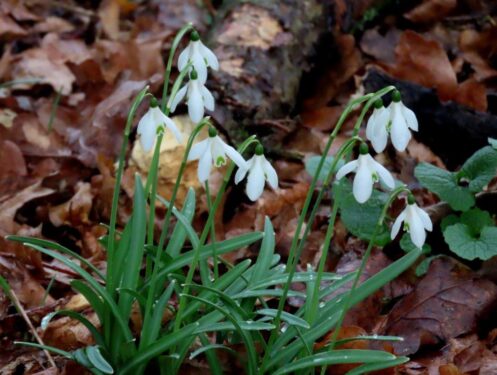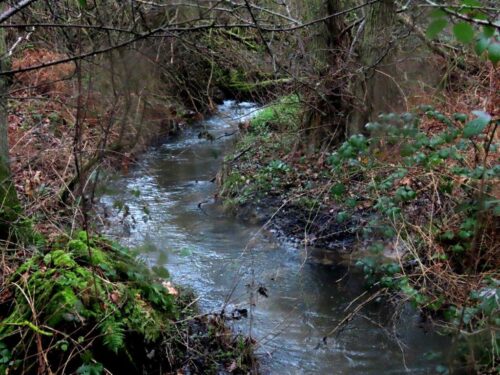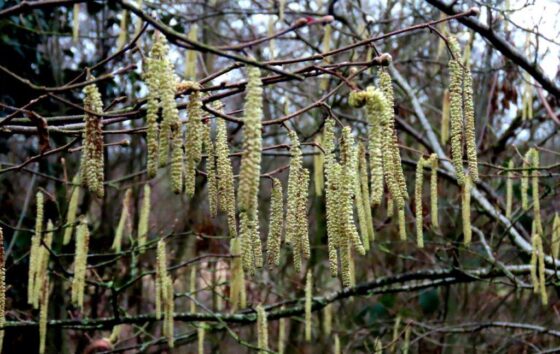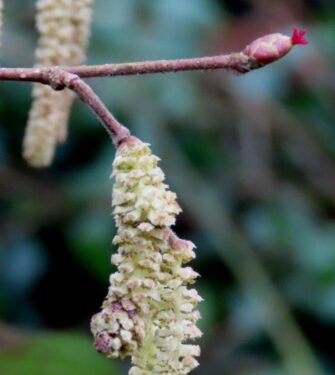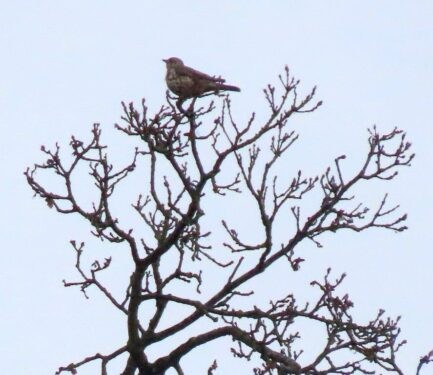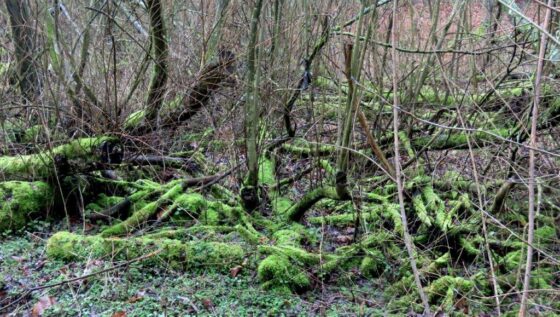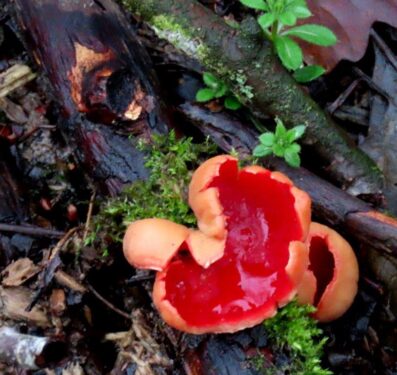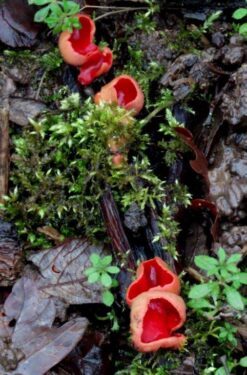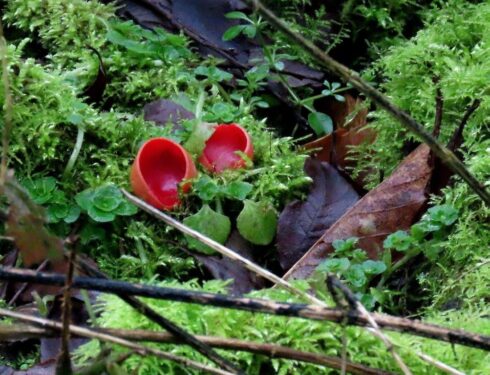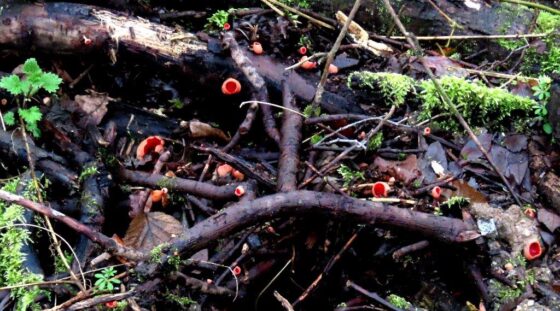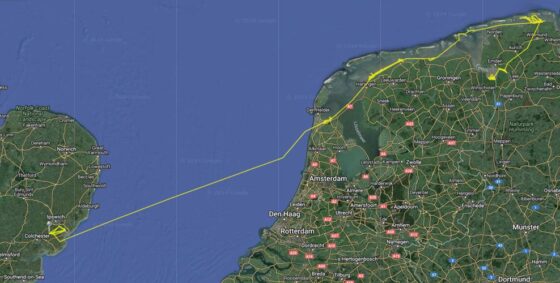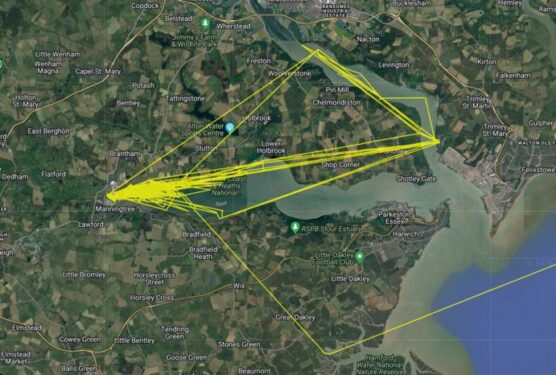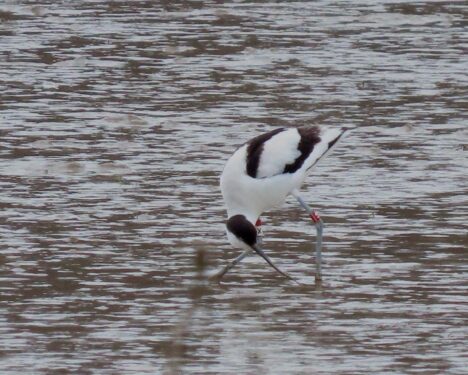Well, the weather hadn’t read the forecast, and the drizzle that had been expected late afternoon set in well before lunchtime – but thankfully the proper rain held off until we had completed our 12km circuit. And it followed hard on the heels of a very wet late January, and almost everywhere it was muddy, deep welly-sucking mud which we could escape only in the afternoon when we headed up onto the gravels that cap the Essex Alps.
We set out first along the Wivenhoe Trail and around Ferry Marsh, to be met with the first in-your -face splash of colour, so welcome on a dull February day, from a magnificent fruiting body of Orange Brain Fungus:
Almost as arresting were the Sunburst Lichens festooning the bare branches along with other lichens, together with leaf-mines on the leaves of Holm Oak, Bramble and Holly, each one a micro-drama of life before our eyes.
Down by the Colne, the tide being well out, there were Teals on the water, a flyover Goosander, Lesser Black-backed Gulls and Oystercatchers getting frisky. Three Black-tailed Godwits were feeding close to the sea wall, giving much better views than the birds we would see more numerously in the open estuary later on, while in a definite sign of spring a probable hybrid Prunus (it seemed more robust than Cherry Plum, normally the earliest in the genus to flower) was in full bloom.
The Wivenhoe waterfront produced its two botanical rarities of cracks in the block-paving, Jersey Cudweed and Four-leaved Allseed: although now familiar they have been with us only for about eight and five years respectively – and how they got here from southern enclaves is still unknown.
Past the Shipyard ad tidal surge barrier, into the open estuary, the mudflats widen rapidly, and waterbird numbers increase markedly, albeit at greater distance tan those upstream. Black-tailed Godwits were joined by Lapwings, Dunlins, Redshanks and eventually a tight bunch of Knots:
Avocets too, mingling with Shelducks and Teals …
… and before too long the burbling of Brent Geese, as a couple of hundred flew off a distant field (perhaps spooked by a noisy military Chinook), over our heads and plonked down on the river in front of us. Cue frantic washing and feather-care, no doubt starting to prepare for their epic 4000 kilometre migration that could be under way in as little as a month. And turning our back reluctantly on the water, there was a Little Egret, a smart male Stonechat and singing Linnets on the grazing marsh.
A Song Thrush was an addition to the springy soundscape along the edge of Grange Wood, where we decided to take refuge from the drizzle for lunch (and half of my cheese sandwich was snaffled by a poorly controlled Cocker Spaniel). With the incessant mud-sploshing, I decided to vary the route, to head up to higher, drier ground, past a wonderful array of old oak pollards and coppice stools marking the boundary of the ancient wood.
Bluebell and Wild Arum leaves were spearing into the light, and the first Lesser Celandine flowers, albeit part-closed in the absence of sun.
On to the ancient trackway of Cutthroat Lane, the banks featured Butcher’s-broom, including a few leaves still bearing open flowers, while closer to habitation Snowdrops have snuck out of the gardens.
Finally into Cockayne’s Reserve, where the Sixpenny Brook was in full spate. It is such a surprise in ‘flat Essex’ to actually hear rushing water!
Hazels were flowering, the male catkins just starting to go over, while Siskins twittered in the Alders and a Mistle Thrush delivered its measured fluty song from the very top of the tallest tree.
A final wander along the Brook through Villa Wood, almost an afterthought, then turned for me into the highlight of the day: more Scarlet Elf-cups than I have ever seen fruiting before, having visited the site over 35 years.
Still the only north-east Essex site for this unmistakeable midwinter joybringer, I first found it here in 1986. On that visit, I was with the boss of the local gravel extraction company who had just won planning permission to excavate from under the ancient wood. He wanted me to advise how it could be done in sympathy with the environment: ‘don’t do it’ was not an option on the table! But he was so impressed by the sight of this locally rare fungus that plans were amended, Sand And Gravel Association restoration awards were received. And the rest is history: it is now an Essex Wildlife Trust reserve, and its flagship fungus is evidently thriving.
POSTSCRIPT!
I now have received details of the colour-ringed Avocet I photographed in front of Grange Wood from Dr Simon Cox. He writes ‘the Avocet you photographed was ringed in The Netherlands and has a transmitter (though battery now flat). This shows its route to Essex—Ed Keeble has seen it on the Stour several times at Mistley‘ and here are maps map of its movements (kindly supplied by the ringer, Petra Manche):
